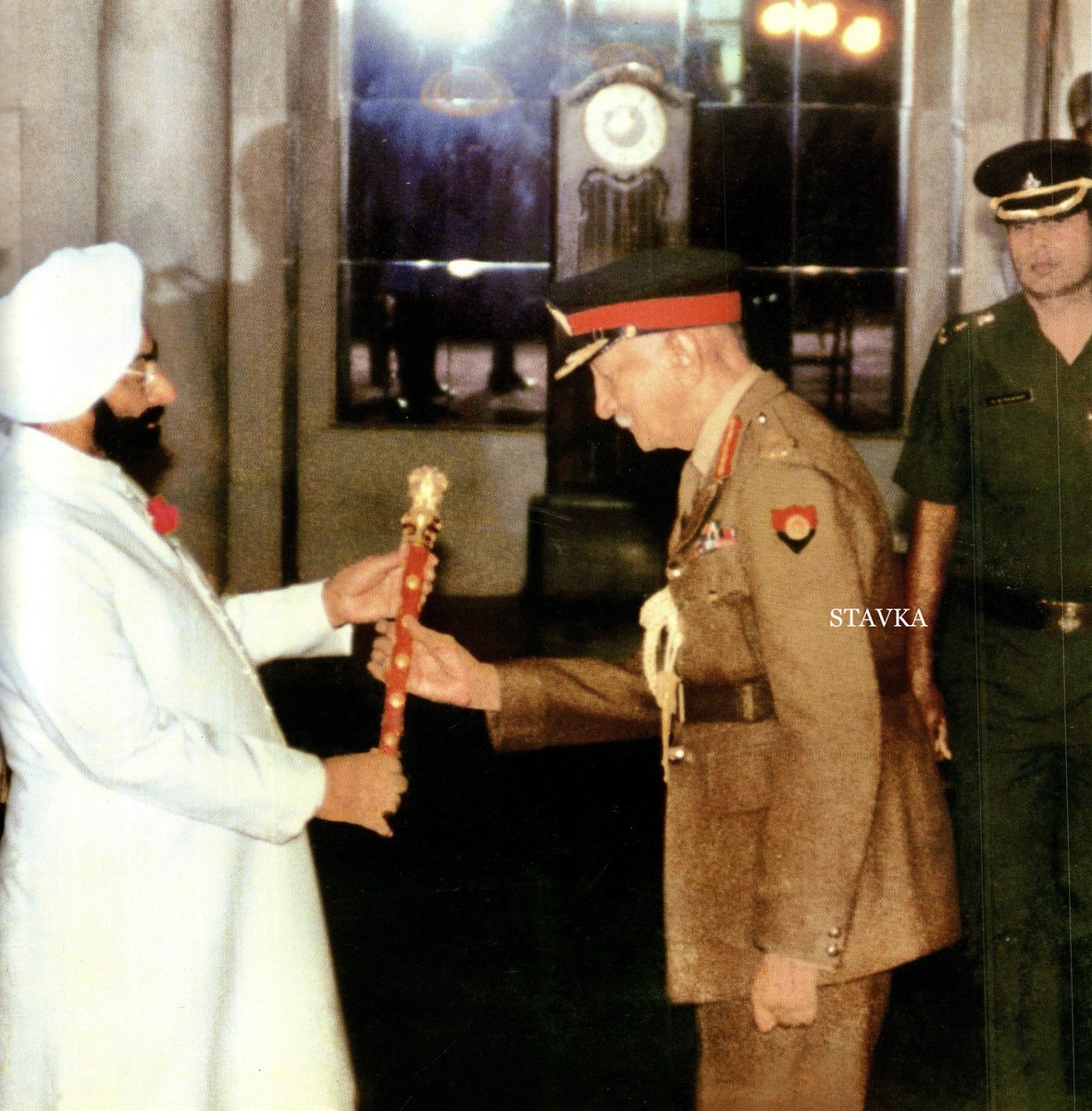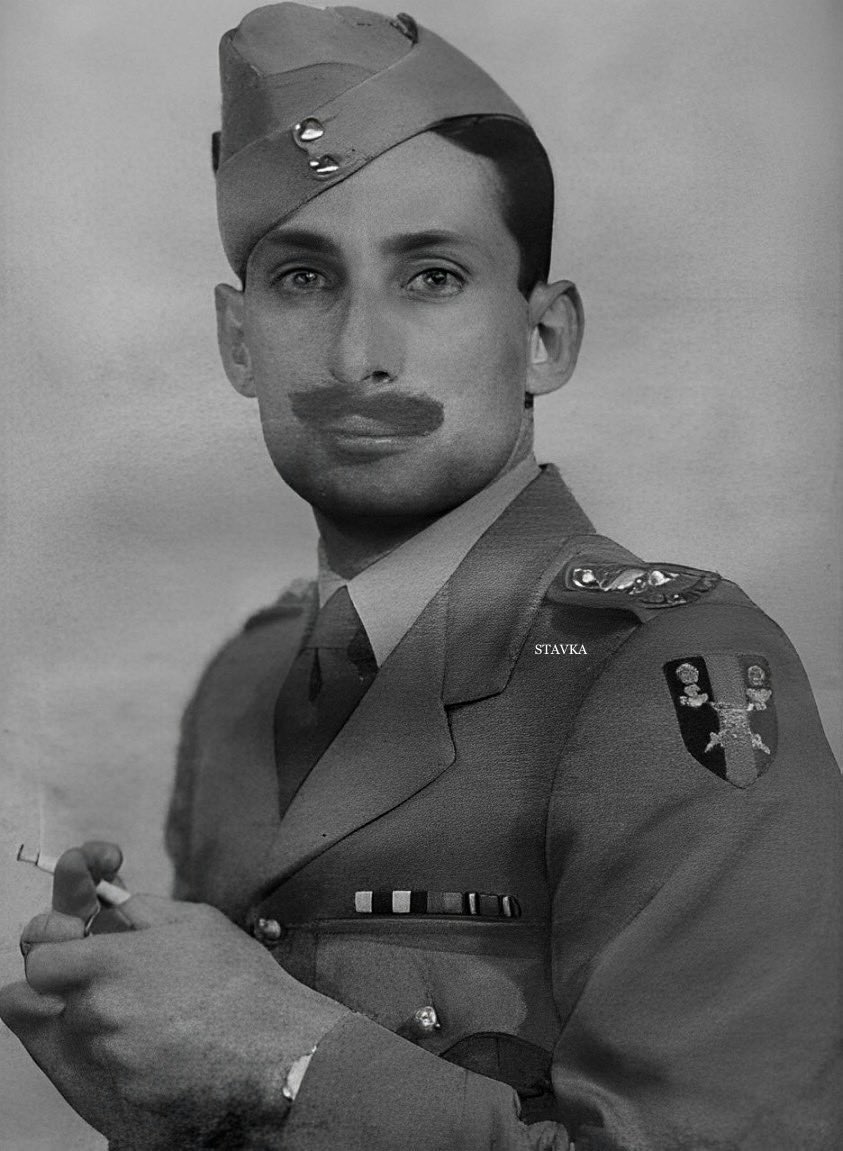In the previous thread, I covered Field Marshal S.H.F.J. Manekshaw’s life, from his family and childhood to joining the Army in the first batch of the IMA—The Pioneers; his young officer days with the Royal Scots and 4/12 FFR; he took 9 bullets and was awarded the Military Cross+ 

in 1942 during the World War II. From 1943-46, he moved every few months— attended the Staff College Course in Quetta, posted as Brigade Major to Razmak Brigade in North Waziristan, posted to 9/12 FFR in Burma under Gen W.J. Slim’s 14th Army, appointed the Directing Staff at the+ 

Staff College in Quetta; assisted with the rehabilitation of over 10,000 Japanese troops as a Staff Officer in Indo-China (now Vietnam); after a six month lecture tour of Australia he was posted to the General Headquarters as GSO1 in MO-3, responsible for perspective planning.+
Now I will try to cover his coveted military career from independence and partition era to becoming the Army Commander (Western and Eastern). I will make a separate thread on his tenure as the Army Chief, 1971 war and the Field Marshal.+
The British Government announced its decision to grant independence to India in February 1947, and just after three months decreed that the country was to be divided in two nations of India and Pakistan.+
This meant not just drawing new boundaries but distribution of assets, including those of the Army.
The Armed Forces Reconstitution Committee was formed on June 16 and it directed:
•Two-thirds of all physical assets would remain with India and+
The Armed Forces Reconstitution Committee was formed on June 16 and it directed:
•Two-thirds of all physical assets would remain with India and+
one-third would be apportioned to Pakistan.
•Regiments, units and sub-units with Muslim majority troops would be assigned to the Pakistan Army while Hindu and Sikh regiments would remain with the Indian Army.+
•Regiments, units and sub-units with Muslim majority troops would be assigned to the Pakistan Army while Hindu and Sikh regiments would remain with the Indian Army.+

Teams worked overtime to separate the files of military establishments and the service records of personnel that would soon belong to Pakistan. Redistribution of the operational plans was a challenging task since they are not made in isolation.+
In March itself when there indications that the country would be partitioned, Manekshaw’s Directorate, MO-3, began sorting maps and plans of territories that would become part of Pakistan from those that would remain with India. To keep the records complete he had the foresight+
to get copies made of all material marked for Pakistan.
On August 14, 1947, Indian officers hoisted a farewell at the Delhi Gymkhana Club for their comrades who would soon leave for Pakistan.+
On August 14, 1947, Indian officers hoisted a farewell at the Delhi Gymkhana Club for their comrades who would soon leave for Pakistan.+

A silver trophy with a Hindu and a Muslim soldier, both training their guns at a common foe was presented by Maj Gen K.M. Cariappa, the senior-most Indian officer, to Brig A.M. Raza, the senior-most Pakistani officer.+ 

Pakistan and India became independent nations on August 14 and 15, 1947. On August 17, the British unveiled the border, the Radcliffe Line, drawn by Sir Cyril Radcliffe, that now divided the two countries. This triggered a mass migration of 10-12 million people.+ 

Muslims from India moved to the new homeland, Pakistan, while Hindus and Sikhs from what was now Pakistan, left for India. People were forced to leave their homes, their wealth and the land they had possessed for generations.+
This resulted in the outbreak of communal frenzy and riots, mainly in the region of Punjab. The Army was called out as hordes of refugees poured into Delhi. MO Directorate assisted the civil administration in maintaining law and order.+ 

On other hand, the 565 princely states ruled by Maharajas had to be settled. The British had given the Maharajas autonomy to govern their states as long as they acknowledged suzerainty of the crown. These states were not officially part of the British Empire and therefore+ 

the Maharajas were required to opt for India or Pakistan by signing an Instrument of Accession. Sardar Vallabhbhai Patel was deputy prime minister and held the additional appointment of ‘Minister of (princely) States’. VP Menon was secretary in the ministry.+ 

• • •
Missing some Tweet in this thread? You can try to
force a refresh













